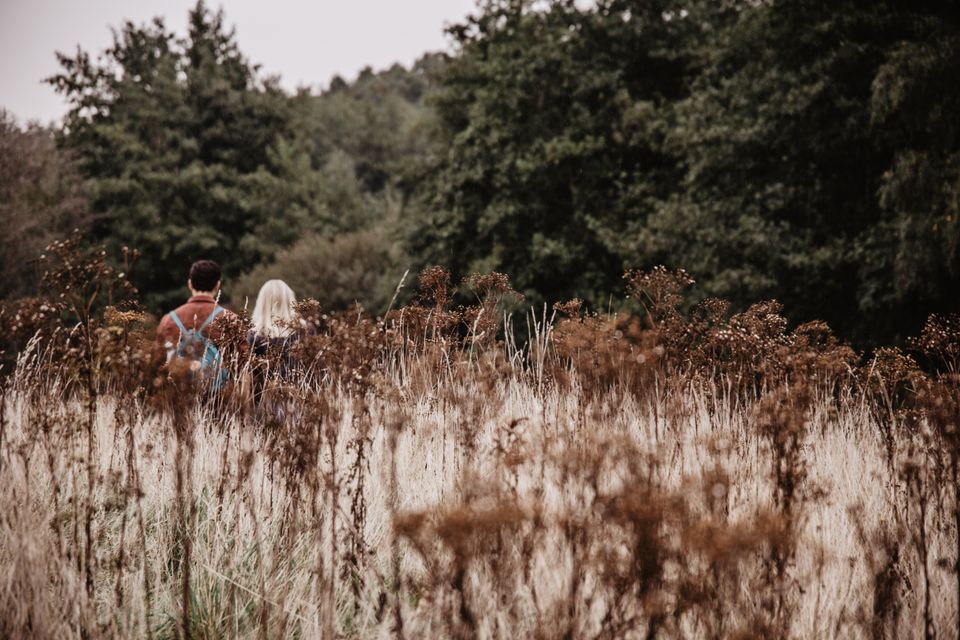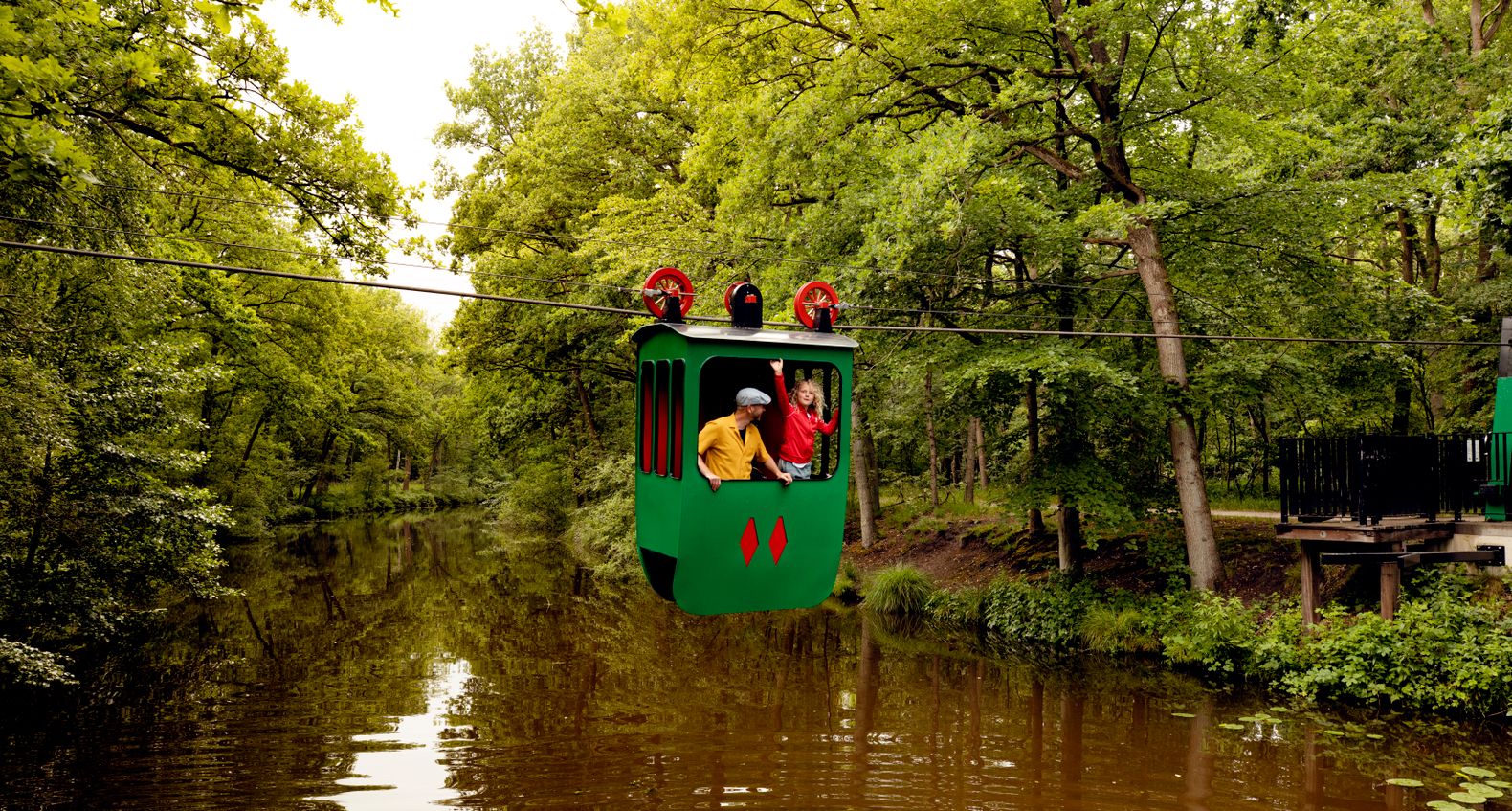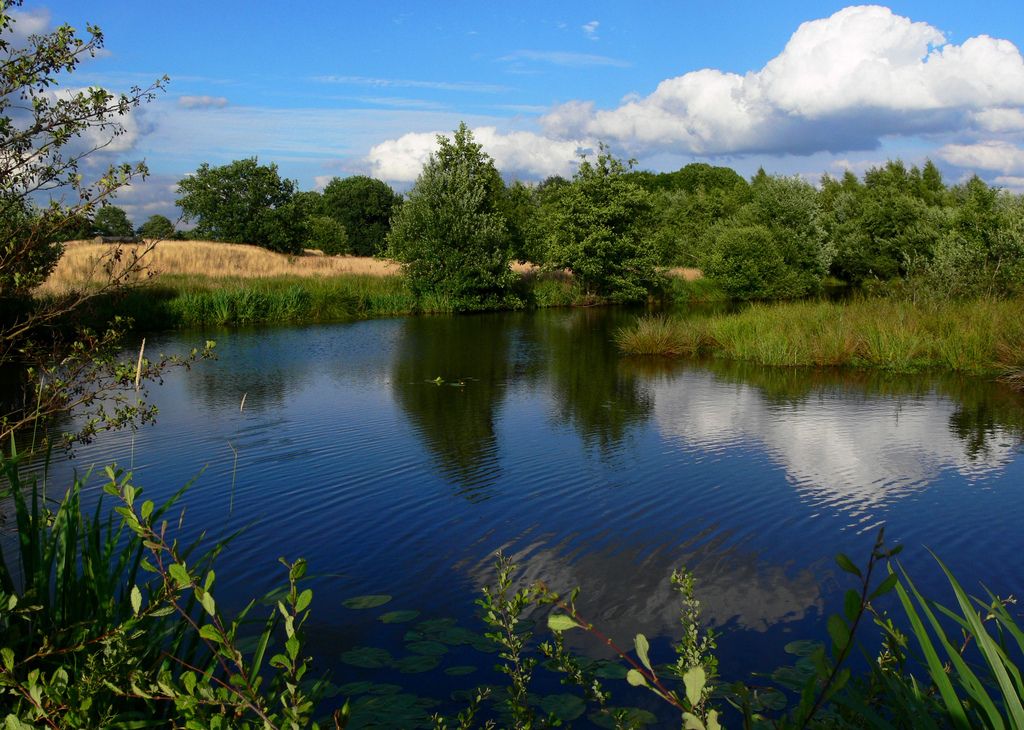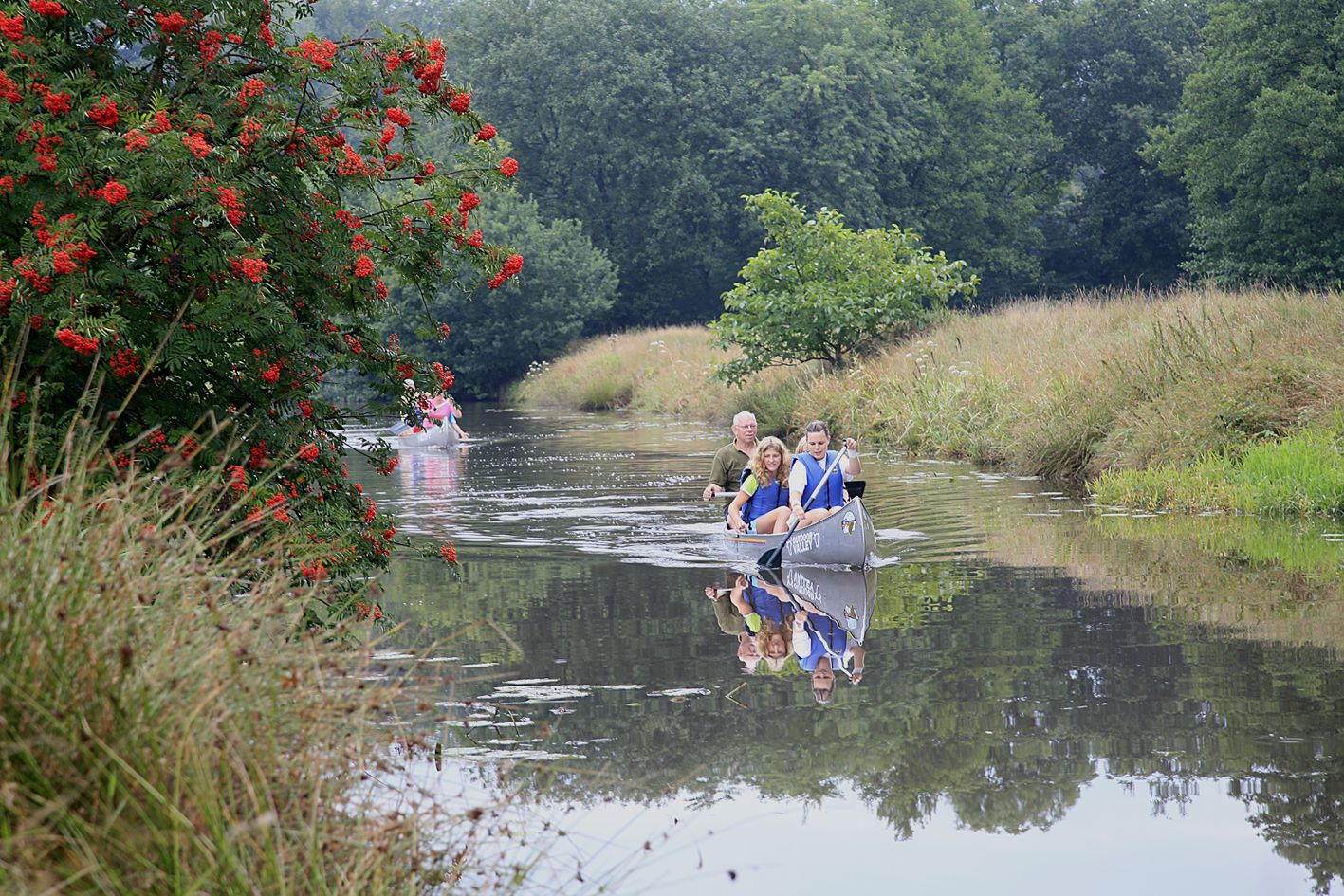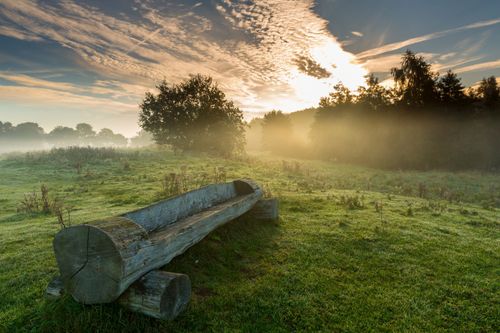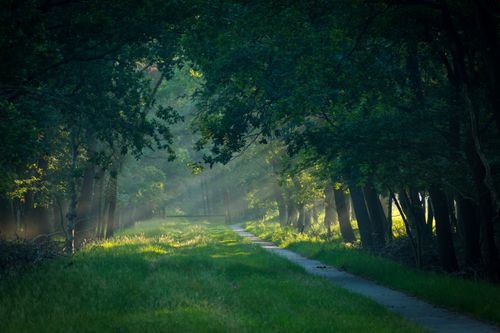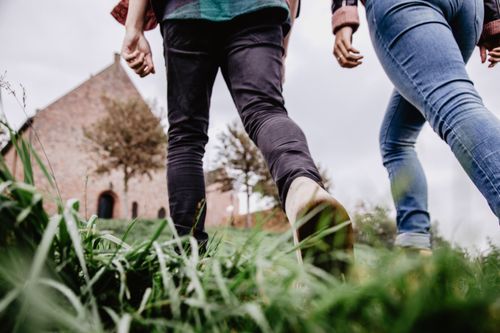Dal van de Ruiten Aa
Storks and Lakenvelders
Throughout eastern Groningen, from Ter Apel to Bad Nieuweschans, all kinds of original stream valleys have been restored. What was straight is allowed to be crooked again. The present forests, grasslands and fields in the Dal van de Ruiten Aa look just like the old Westerwold esdorpen landscape. It was immediately clear that the plants and animals liked this 'rewilding' too. In spring, the nature 'of old' is full of beautiful flowers. While the released Lakenvelders graze, a kingfisher searches for fish and a great egret flies over. The stork, which had previously disappeared from Westerwolde, is also back. Could it get any more beautiful? Perhaps even the otter and the beaver will soon rediscover the stream valley.
Ancient forests and sand hills
There is plenty to do in this area. Take a short circular walk from Gasterij Natuurlijk Smeerling or combine a slightly longer trip with a visit to Burcht Wedde. According to experts, the Dal van de Ruiten Aa, together with the valleys of the Westerwoldse Aa and the Mussel Aa, is one of the most beautiful valleys in Europe. You see it, you smell it, you hear it when you walk or cycle along one of the many routes through the valley. Both the Metbroekbos and the Liefstinghsbroek are among the oldest forests in Groningen. Special plants such as wood anemone and white sorrel grow here. And that sandy hill south of Wedde? That is the Giezelbaarg. Several men and women were killed here in the 16th century because they were thought to be practising witchcraft.
A hand-powered cable car
If you go hiking near Ter Apel, take a walk to the Netherlands' first hand-powered cable car in Ter Apel. The 22.4-metre-long cable car connects the banks of the Ruiten Aa. Take a seat in the gondola and use the spinning wheels to take yourself across.
